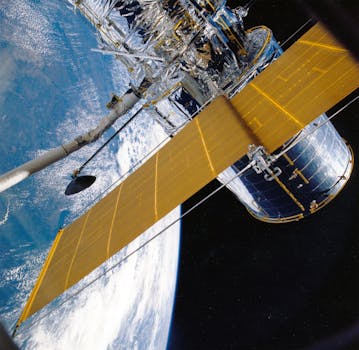
Updates from Above: Essential Insights into the Latest in Satellite Telecommunications
Satellite Telecommunications has become an essential part of modern communication, providing global coverage and connectivity. The latest updates in satellite telecommunications have brought about significant advancements in technology, emerging trends, and innovations. In this article, we will delve into the latest developments in satellite telecommunications, exploring the current state of the industry, emerging trends, and future prospects.
Current State of the Industry
The satellite telecommunications industry has experienced significant growth in recent years, driven by increasing demand for global connectivity and the need for reliable communication services. The industry has witnessed the launch of numerous satellites, including low-earth orbit (LEO) constellations, medium-earth orbit (MEO) satellites, and geostationary orbit (GEO) satellites. These satellites have enabled the provision of a wide range of services, including broadband internet, mobile communications, and television broadcasting.
One of the key drivers of the industry’s growth has been the development of new technologies, such as high-throughput satellites (HTS) and very high-throughput satellites (VHTS). These satellites have enabled the provision of high-speed broadband services, supporting applications such as video streaming, online gaming, and cloud computing. Additionally, the development of advanced antenna technologies has improved the efficiency and capacity of satellite communications, enabling the support of more users and applications.
Emerging Trends and Innovations
The satellite telecommunications industry is witnessing several emerging trends and innovations, which are expected to shape the future of the industry. One of the key trends is the development of LEO constellations, which are designed to provide global coverage and low-latency communications. Companies such as SpaceX, OneWeb, and Amazon’s Kuiper Systems are launching thousands of satellites into LEO, enabling the provision of high-speed broadband services and supporting a wide range of applications, including IoT, 5G, and mission-critical communications.
Another emerging trend is the development of hybrid satellite-cellular networks, which combine the benefits of satellite and cellular communications. These networks enable the provision of seamless connectivity, supporting applications such as extended broadband coverage, IoT, and mission-critical communications. The development of hybrid networks is expected to drive growth in the industry, as it enables the support of a wide range of applications and services.
Future Prospects and Challenges
The satellite telecommunications industry is expected to experience significant growth in the future, driven by increasing demand for global connectivity and the need for reliable communication services. The development of new technologies, such as quantum communications and optical communications, is expected to further enhance the capacity and efficiency of satellite communications. However, the industry also faces several challenges, including regulatory hurdles, spectrum allocation, and the need for sustainable and environmentally friendly practices.
In conclusion, the satellite telecommunications industry is experiencing significant growth and development, driven by emerging trends and innovations. The latest updates in satellite telecommunications have brought about advancements in technology, emerging trends, and future prospects. As the industry continues to evolve, it is essential to stay updated on the latest developments and insights, ensuring that we are well-equipped to support the growing demand for global connectivity and reliable communication services.



